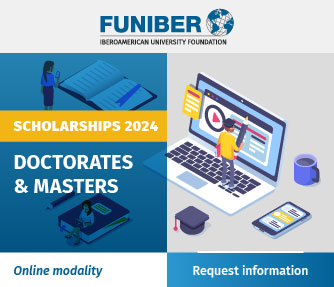MLS Health and Nutrition Research
ISSN: 2952-2471
The MLS Health and Nutrition Research journal was created as a biannual publication with the aim of publishing original research and review articles in basic, applied, and methodological areas that contribute to the progress of any field of health and nutrition as its main objective. The articles included in this journal are published in Spanish, Portuguese and English. The international scope of this journal promotes the dissemination of knowledge in its different areas.
In this page, you will be able to access the tables of contents for all issues of the MLS Health and Nutrition Research journal, article abstracts and complete articles. In the "About" section you will also find all the information about our journal, its editorial team, publication system, and online submissions.
Interactivity with readers and authors
The journal keeps readers informed every time a new issue is published or a press version is available. Likewise, authors are informed in real time of the status of the manuscript submitted for review and, likewise, they are informed when the manuscript is accepted and published.
Once the article has been published, the author will be able to download from his/her registered user space, in the left-hand sidebar, the certificate accrediting the publication, by filling in the fields requested.
Latest articles
Accepted articles
The consumption of Solalum Lycopersicum has increased in recent years and with it its production and the waste generated as a result of cultivation and processing. For this reason, the present work aims to evaluate and determine whether there are significant differences between the different methods of recovery of tomato by-products. The bibliographic review through which 52 articles published almost completely in the last five years were selected: twelve for the extraction of carotenoids, ten for the extraction of phenolic compounds, four for pectin and seven for the formation of biogas. The food valorization of tomato is wide and little studied yet. The extraction of phenolic compounds, pectin or lycopene offers a wide range of new possibilities. Emerging pretreatment methods such as high pressures, electrical pulses or supercritical CO2 open the possibility of improving the extraction of bioactive compounds and achieving a circular economy. It is concluded that further studies are needed to confirm and investigate the effectiveness and cost-effectiveness of emerging methods, which are generally the most efficient for the extraction of target compounds.
The attempt to bring closer biological treatments, with high cost for citizens, has boosted the birth and growth of biosimilar drugs. Molecules whose production is focused on being copies of the active ingredients of drugs of biological origin catalogued as innovative. As they are biological molecules, the fact of being copies of the active ingredient becomes complex, as small variations in their biochemical composition can affect their safety and efficacy. Unlike innovators, whose marketing rationale is aimed at the safety of the drug through clinical studies, the basis for being marketed under safe conditions, however, biosimilar drugs focus on ensuring that their quality attributes are as close as possible to the molecule they are intended to replace. For this reason, by studying the critical quality attributes and the modulators that affect them, it is possible to establish a classification of these attributes that will allow harmonization of the biosimilar concept. The attributes that characterize the molecules are antagonistic or complementary to each other, making it possible to establish a range of acceptance that allows the development of a system for grading the comparability between innovators and biosimilars, bringing the concept, which to date has been theoretical, closer to a quantitative aspect. But always taking into consideration fundamental aspects such as the incidence of laboratory error in its assessment. Therefore, based on a harmonized model of the concept of the quality attribute, this should be reformulated towards a term that unifies the concept with its intrinsic error, so that it can be assessed in a harmonized way.












